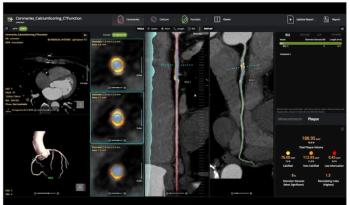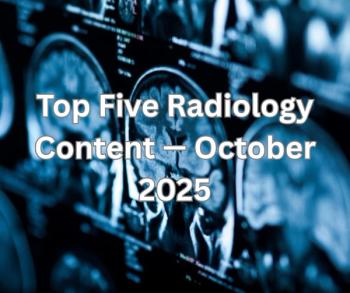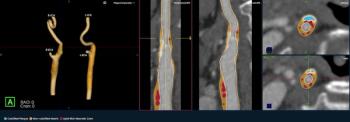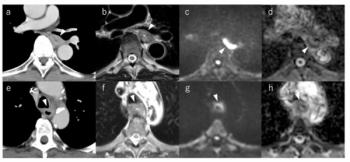
Informatics sifts complex MI data
Computer tools guide research and streamline interpretation of clinical imaging results
Emerging imaging technologies cannot exist without medical informatics. The relatively new field of molecular imaging is an example.
Molecular imaging uses data collected on the molecular level to generate images that report on changes in gene expression, a task requiring enormous computing power to digest the gigabytes of data generated by the technology. Studies have demonstrated that generating images based on molecular differences, as opposed to anatomic differences between tissues, can result in more sensitive detection of diseased tissue, said James P. Basilion, Ph.D., director of the Center for Molecular Imaging at Case Western University.
For example, the technique allows imaging of drug efficacy against particular drug targets, an advance that one day may allow physicians to track the effectiveness of therapies, Basilion said. MI may also someday allow physicians to use molecular diagnostics to "see" diseased cells they are trying to fix. Genetic information garnered from informatics applications can then be used to design treatment tailored to an individual's molecular makeup.
"The concept of molecular imaging is that we will move away from traditional radiology where differences in tissue density or anatomic changes are used to generate images, and move toward imaging based on biochemistry," Basilion said.
Enzymatic reactions or expression of different proteins that could be tagged for imaging would then provide information on biochemistry, as opposed to reporting on differences of anatomy, he said. The advantage is that differences in anatomy carry a higher threshold for detection.
"Thus, before a tumor becomes large, you can detect the biochemistry that underlies the accelerated growth, and that would allow earlier detection," Basilion said.
None of this happens without informatics.
"Healthcare informatics has the potential to boost molecular imaging research in terms of quality, scope, and time to market," said Oran Muduroglu, CEO of healthcare informatics for Philips Medical Systems.
Clinical trials in the research phase require sophisticated data mining capabilities to correlate outcomes, he said.
The high-volume genomic and proteomic assays of today can identify a number of potential targets associated with a variety of difficult diseases, such as central nervous system disorders, said Alan P. Carpenter, Ph.D., vice president of business development and legal affairs for Avid Pharmaceuticals.
Often, the most relevant markers of disease must be identified from literally hundreds or thousands of these potential targets. Advanced informatics applications are necessary to identify the most likely targets relevant to that disease.
Once these targets are identified, high-throughput computational simulation screening techniques are used by research organizations to identify the compounds that bind to these targets. This requires enormous informatics support to sift through the large volumes of data on all the "hit" compounds in order to identify the best candidates to target the pathology and disease of interest, Carpenter said.
Behind this merger of informatics and molecular imaging is the belief that molecular informatics applications will one day reduce healthcare costs by providing physicians with the tools necessary to provide personalized medicine much earlier in the care cycle.
"By streamlining important information on factors such as family history, risk-inducing behaviors, and the sub-acute phase, molecular informatics is key to applying sophisticated new diagnostic molecular imaging procedures that are tailored to specific high-risk patients," Muduroglu said.
POTENTIAL CLINICAL USE
The likelihood that some of these molecular imaging informatics applications will reach clinical practice is good, albeit somewhat remote now. Carpenter said applications of molecular informatics in clinical practice are possible at a couple of different levels.
For example, screening tools may be helpful in the identifying the most appropriate patients for a particular treatment based on their genomic or proteomic patterns, as well as the results of molecular imaging techniques, supplemented by informatics analysis tools. This may ultimately be helpful to avoid unwanted side effects of treatments or to select patients who would most likely exhibit the best response to the treatment under consideration by the physician, he said.
In addition, the results of molecular imaging and genomic and proteinomic assays together with molecular imaging information may allow assessment of patient response to treatment.
While the prospects for clinical use of these applications are promising, don't expect them to appear over night.
"When we can generate this sort of data and put this paradigm out there, it could be translated into the clinic," he said. "But it's a long-term translation-it's not going to happen in the next five years."
Newsletter
Stay at the forefront of radiology with the Diagnostic Imaging newsletter, delivering the latest news, clinical insights, and imaging advancements for today’s radiologists.

































